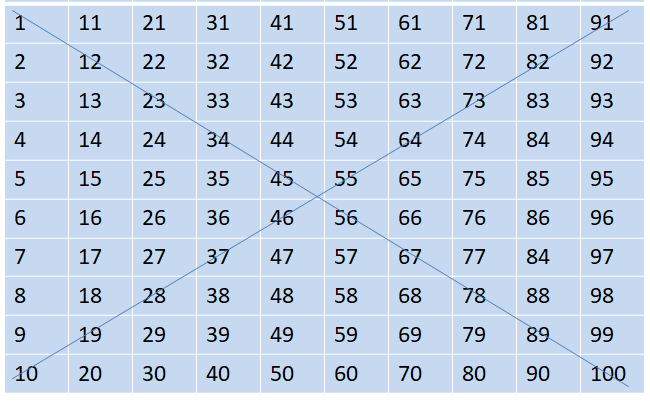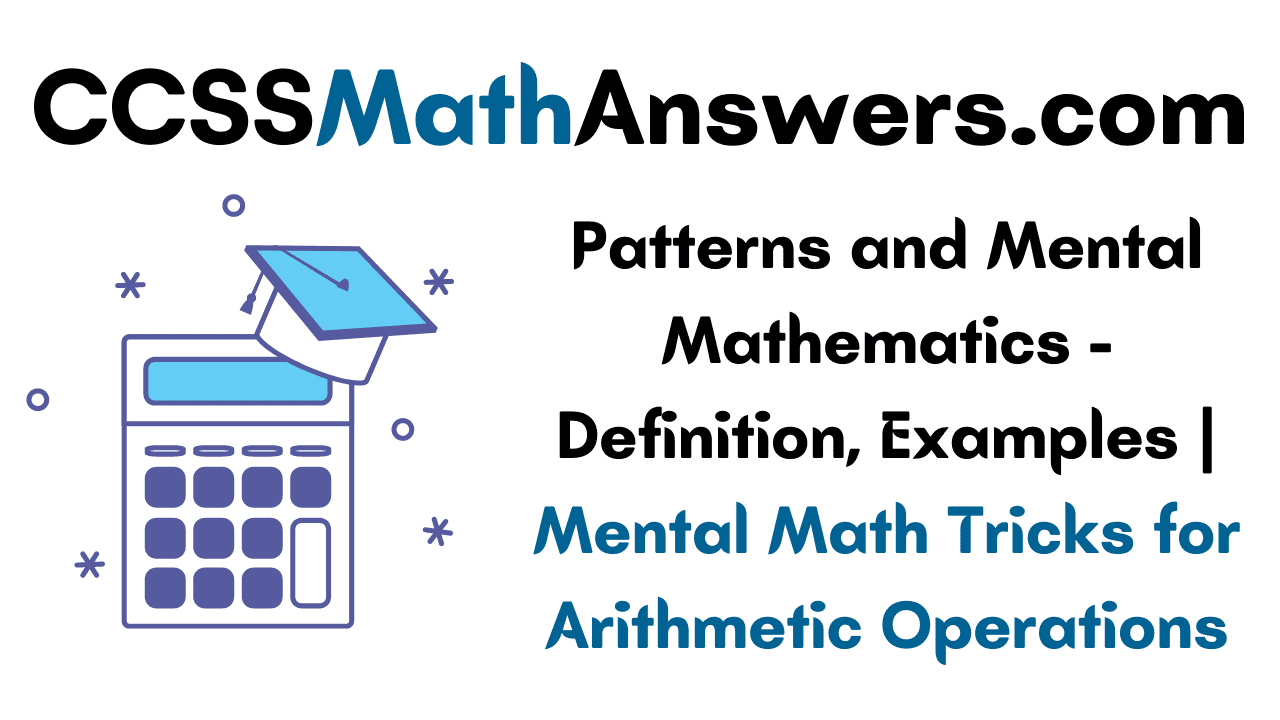The pattern is a scheme that helps to solve math questions easily and fastly. Mental mathematics is a skill that allows students to do maths in their heads without using pen and paper or a calculator. Get the simple patterns that make addition, subtraction, multiplication, and division problems easier. Also, find the solved examples on patterns and mental mathematics in the below-mentioned sections.
What is meant by Pattern and Mental Maths?
A pattern is a series or sequence that repeats based on the rule and the rule helps to solve a problem. Mental math is a group of skills that allow people to do maths in their head without using a calculator or pen and paper. It is useful in everyday life and school. It helps the students to understand the concepts easily and quickly.
Also, Read
- Multiplication and Division
- Divide by 10, 100 and 1000 Divisors
- Counting Numbers in Proper Pattern
- Concept of Pattern
Patterns in Mathematics
Below provided is the pattern for counting numbers from 1 to 100.

The following are the observations that can be read from a pattern.
- The numbers in every column increase by 1.
- The numbers in every row increase by 10.
- The diagonally located numbers from the left to right from least to highest have a difference of 9. Those are 10, 19, 28, 37, 46, 55, 64, 73, 82, 91.
- And the diagonally located numbers from left to right from top to bottom have a difference of 11. Those numbers are 1, 12, 23, 34, 56, 67, 78, 89, 100.
- All the numbers in the first row have 1 in their unit’s place, the second row have 2, the third row has 3, and so on.
Mental Math Tricks – Addition, Subtraction, Multiplication, Division
Addition:
The most used and best trick to solve the addiction problem is to expand the given numbers. Add the numbers in hundred’s places, tens place, units place together. Again add the obtained numbers to get the sum of the numbers.
Example:
Solve 1256 + 563 + 78
1256 + 563 + 78 = 1000 + 200 + 50 + 6 + 500 + 60 + 3 + 70 + 8
= 1000 + 700 + 180 + 17
= 1700 + 197
= 1897
Subtraction:
For solving subtraction problems, we need to expand the given numbers and provide the sign. Subtract the numbers in the hundreds place, ten place, unit’s place.
Example:
Solve 875 – 232
875 – 232 = 800 + 70 + 5 – 200 – 30 – 2
= 600 + 40 + 3
= 643
Multiplication:
For solving the multiplication of smaller numbers, we can use the repeated addition method. For getting the product of larger numbers, expand the numbers and perform the multiplication. At the end add or subtract those numbers.
Examples:
8 x 6 = 8 + 8 + 8 + 8 + 8 + 8 = 48
82 x 5 = (90 – 8) x 5 = 90 x 5 – 8 x 5
= 450 – 40 = 410
105 x 8 = (100 + 5) x 8
= 100 x 8 + 5 x 8
= 800 + 40 = 840
Division:
For dividing the numbers, divide every digit of the dividend by the divisor and write the quotient.
Example:
156/4 = 39
Examples on Patterns and Mental Math Strategies
Question 1:
Solve the following
(i) 27 x 6
(ii) 49 x 50
(iii) 53 x 47
Solution:
(i) Given that,
27 x 6
Expand 27 = 20 + 7
27 x 6 = (20 + 7) x 6
= 120 + 42
= 162
Therefore, 27 x 6 = 162
(ii) Given that,
49 x 50
Represent 49 as 50 – 1
49 x 50 = (50 – 1) x 50
= (50 x 50) – 50
= 2500 – 50
= 2450
Therefore, 49 x 50 = 2450
(iii) Given that,
53 x 47
Represent 53 as 50 + 3 and 47 as 50 – 3
53 x 62 = (50 + 3) x (50 – 3)
= 2500 – 9 = 2491
Therefore, 53 x 47 = 2491.
Question 2:
Find the sum of the numbers.
(i) 85 + 162 + 569
(ii) 145 + 75
(iii) 1453 + 2563 + 4326
Solution:
(i) Given that,
85 + 162 + 569
Expand all the numbers
85 + 162 + 569 = 80 + 5 + 100 + 60 + 2 + 500 + 60 + 9
= 600 + 200 + 16
= 816
So, 85 + 162 + 569 = 816
(ii) Given that,
145 + 75
Expand all the numbers
145 + 75 = 100 + 40 + 5 + 70 + 5
= 100 + 110 + 10
= 220
So, 145 + 75 = 220
(iii) Given that,
1453 + 2563 + 4326
Expand all the numbers
1453 + 2563 + 4326 = 1000 + 400 + 50 + 3 + 2000 + 500 + 60 + 3 + 4000 + 300 + 20 + 6
= 7000 + 1200 + 130 + 12
= 8200 + 142
= 8342
So, 1453 + 2563 + 4326 = 8342
Question 3:
Subtract the numbers.
(i) 356 – 182
(ii) 1563 – 823
(iii) 526 – 230
Solution:
(i) Given that,
356 – 182
Expand all the numbers
356 – 182 = 300 + 50 + 6 – 100 – 80 – 2
= 200 – 30 + 4
= 170 + 4 = 174
So, 356 – 182 = 174
(ii) Given that,
1563 – 823
Expand all the numbers
1563 – 823 = 1000 + 500 + 60 + 3 – 800 – 20 – 3
= 700 + 40 = 740
So, 1563 – 823 = 740
(iii) Given that,
526 – 230
Expand all the numbers
526 – 230 = 500 + 20 + 6 – 200 – 30
= 300 – 10 + 6
= 296
So, 526 – 230 = 296
Question 4:
Divide the following numbers.
(i) \(\frac { 500 }{ 5 } \)
(ii) \(\frac { 1492 }{ 2 } \)
(iii) \(\frac { 768 }{ 8 } \)
Solution:
(i) Given that,
\(\frac { 500 }{ 5 } \) = 100
(ii) Given that,
\(\frac { 1492 }{ 2 } \) = \(\frac { 1400 }{ 2 } \) + \(\frac { 90 }{ 2 } \) + \(\frac { 2 }{ 2 } \)
= 700 + 45 + 1
= 746
(iii) Given that,
\(\frac { 768 }{ 8 } \) = 96
